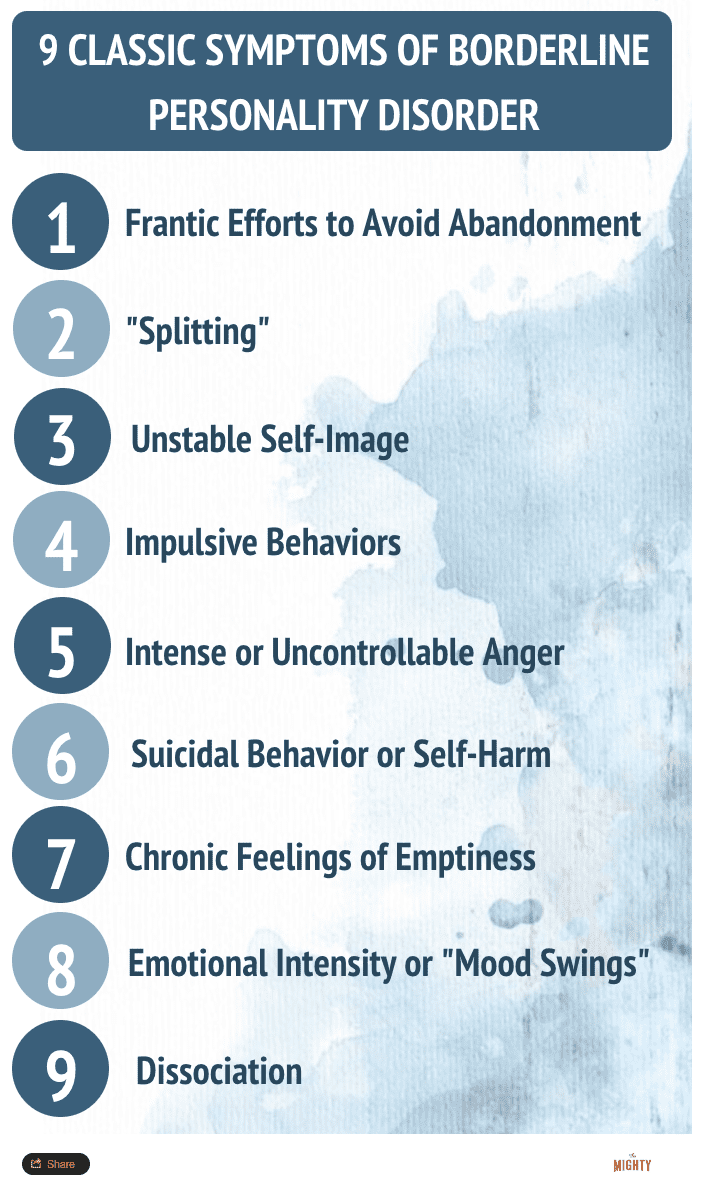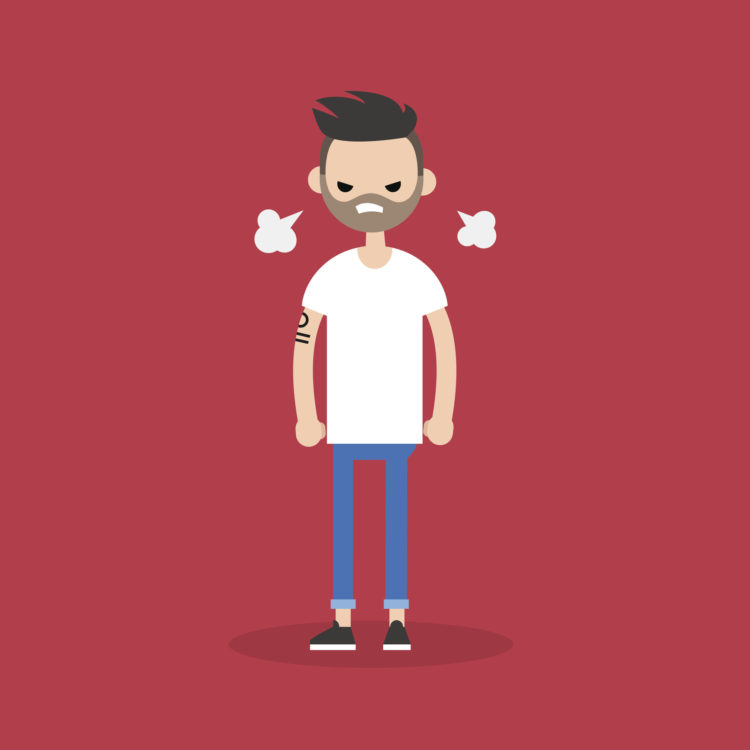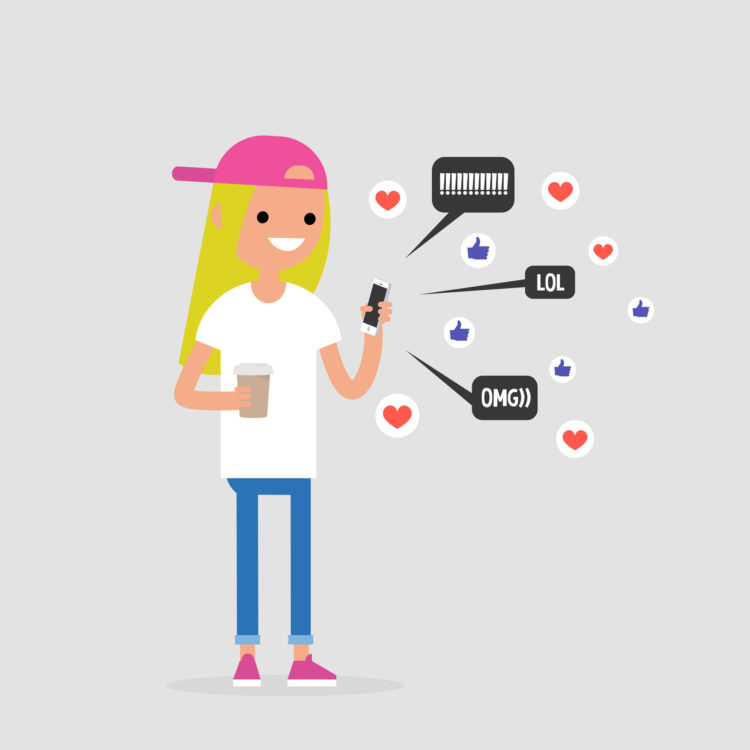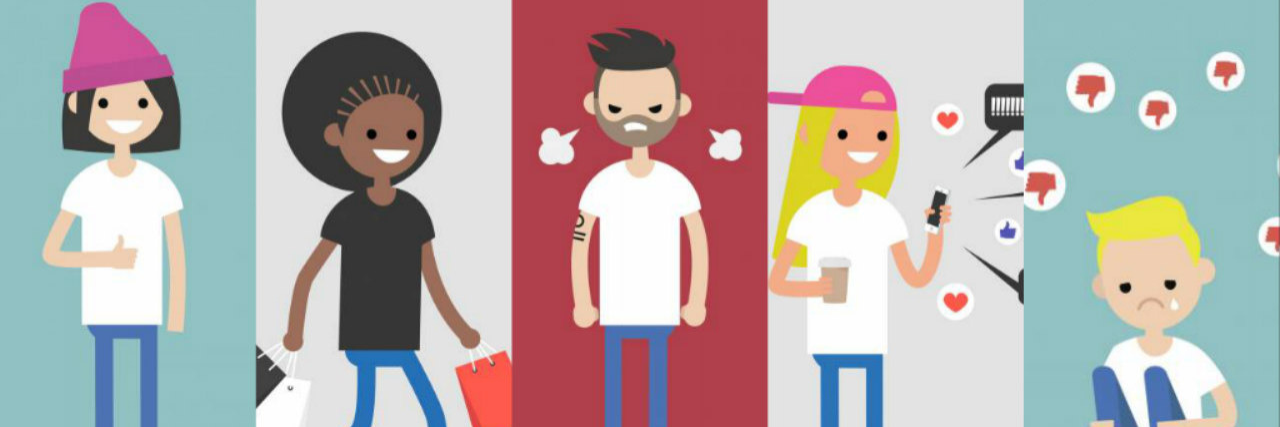If you live with borderline personality disorder (BPD), you’re probably familiar with the nine classic symptoms of the disorder. From chronic emptiness to uncontrollable anger, there is a lot of variation from symptom to symptom. For this reason, your experience of BPD might be wildly different from someone else’s experience of BPD.
For those who aren’t familiar, a person usually has to meet five of the nine diagnostic criteria outlined in the Diagnostic and Statistical Manual of Mental Disorders, 5th Edition (DSM-5) to be diagnosed with BPD. This of course leaves room for a lot of different combinations of BPD symptoms.
“If you do the math, there are 256 different official versions of borderline personality disorder,” John M. Oldham, M.D. distinguished emeritus professor of psychiatry in the Menninger department of psychiatry and behavioral sciences at Baylor College of Medicine told The Mighty.

To make things a little simpler, Dr. Oldham proposed a theoretical model of five different types of BPD in 2002, because, “otherwise you just get lost in the different combinations.”
Below, we’ve broken down each type, as well as offered some resources from our community. Before we start, it’s worth noting that there can be overlap with each type. You might find you identify with one type or you might identify with three. Oldham’s model is meant to be just one helpful tool in your tool box for understanding your experience with BPD.
Here are the five types of borderline personality disorder:
Type 1: Affective

The first type of BPD is characterized primarily by emotional dysregulation. In simpler terms, this means feeling like you can’t control your emotions. If you experience frequent and intense mood swings throughout the day, you might relate most to this type.
People with the affective type of BPD struggle most with regulating their emotions when it comes to their interpersonal relationships. When faced with relational stress, people with this type of BPD are prone to anxiety, depression and suicidal thoughts. For example, if a person with affective BPD gets into an argument with their significant other, they may immediately think the relationship is over and begin to struggle with suicidal thoughts.
“What most people are able to brush off as just, for example, an unimportant comment, often sends me into despair,” Mighty contributor Morgan Rondinelli wrote about her experience with emotional dysregulation due to BPD. “While most might feel sad if someone they love is hurting, I am despondent. But then I walk outside in the sunshine, and suddenly I am overjoyed.”
If you can relate to this type, you’re not alone. Navigating relationships can be tricky enough, and when you add in emotional regulation struggles, it’s easy to feel hopeless. There is hope. Check out the following stories from our Mighty community from people who can relate:
- Why Borderline Personality Disorder Makes Me Emotionally ‘Cold-Blooded’
- If You Feel ‘Too Emotional’ (or Not Emotional Enough), Here’s a Skill You Need
Type 2: Impulsive

If you’ve ever struggled with impulsivity due to BPD, you might relate to the second type of BPD: impulsive. Dr. Oldham said that similar to the affective type of BPD, the impulsive type of BPD involves a loss of control. Instead of losing control of your emotions, it’s losing control of your behavior. People with impulsive BPD are more prone to struggle with behaviors like self-injury, substance abuse, binge eating, reckless driving, risky sex, and compulsive shopping.
Mighty contributor Laura Snelling knows what it’s like to lose control of her behavior because of impulsive feelings. In her piece, “The Borderline Personality Disorder Trait We Need to Talk About,” she wrote:
On a daily basis, I find myself in the midst of making impulsive decisions. Whether they be something very small and minor that most wouldn’t even notice if I made them, or something major and life-altering that people would clearly notice. I am very ashamed of some of the impulsive decisions I have made in the past, therefore, I beat myself up over the fact of even having impulsive thoughts to begin with.
It’s natural to feel guilty or ashamed of past impulsive actions — especially if they have negative consequences in your life — but we want you to know there is no shame in struggling with BPD. If impulsivity is affecting your quality of life, reach out to a mental health professional who can help you manage your urges.
For more on impulsivity from our BPD community, check out the following stories:
- The Unexpected Habit My Therapist Connected to My Borderline Personality Disorder
- 18 ‘Impulsive’ Hairstyles People With Borderline Personality Disorder Regret
Type 3: Aggressive

The third type of BPD is connected to the “inappropriate” or “uncontrollable” anger symptom of BPD. This anger is called inappropriate because the scale of the anger seems disproportionate to what a circumstance might warrant. Aggressive behavior in the third type of BPD can either be a temperament or a secondary response to trauma, usually from childhood.
For example, Oldham said someone who lives with this aggressive type of BPD might interpret the neutral facial expression of someone as critical. In response to this, they may pick a fight with the person to defend him or herself. This pattern of behavior understandably creates tension in a person with BPD’s interpersonal relationships.
When asked to share a “red flag” that let him know his borderline rage was coming, Mighty community member Vincenzo M. responded:
The red flag for me is having the urge to physically harm something. I’ve never hit a person, but I’ll hit a wall or I rip a book in half. When I get that urge, I try to leave the situation or calm down.
If you struggle with anger due to BPD, you’re not alone. Seek support from loved ones and mental health care professionals if anger is affecting your daily functioning. For more on BPD and ager, check out the following stories from our community.
- What It’s Like to Have Rage ‘Blackouts’ When You Live With Borderline Personality Disorder
- 3 Classic Ways ‘Borderline Rage’ Manifests in Relationships
Type 4: Dependent

If you’ve ever been called “clingy” in your relationships, absolutely hate being alone or struggle with knowing who you are outside of others, you might relate to the “dependent” type of BPD.
People with this type of BPD often weren’t encouraged to become independent and autonomous growing up, leaving them with overly dependent behaviors in adulthood. These folks may be overly accommodating of others’ needs and struggle with setting boundaries. Many people with this type “cling” to their loved ones because they fear abandonment.
In terms of identity struggles, people with this type of BPD may co-opt the personality traits of others. To read more from our community about unstable identity and fear of abandonment, check out the following stories.
- 15 Things People Don’t Realize You’re Doing Because You Have an ‘Unstable Identity’
- How Fear of Abandonment Affects the Other Symptoms of My Borderline Personality Disorder
Type 5: Empty

Like the dependent type, people with the fifth “empty” type of BPD often struggle with identity issues. If you live with this type, you might have grown up in a difficult home situation — whether it be due to active abuse, neglect or invalidation. As a result, you may struggle with trusting others or may feel directionless in terms of setting personal goals.
Mighty contributor Seth Stewart wrote his experience with feeling empty in his piece, “What It’s Like to Experience the Chronic ‘Emptiness’ of Borderline Personality Disorder“:
One of the diagnostic criteria for my condition I experience most intensely is a chronic feeling of ’emptiness.’ I put the word ’emptiness’ in quotations because, as I and others with BPD know, the feeling is not exactly just emptiness — which implies a nothingness or void where something is supposed to be…
I think a better term than emptiness might be longing. It’s not just the perceived lack, it’s the yearning for it to be filled with love, connection and fulfillment.
If you long for connection because you feel empty, you’re not alone. There is help available. If you are struggling or suicidal and need support right now, you can call, text, or chat the Suicide & Crisis Lifeline at 988, or text HOME to 741-741 to reach the Crisis Text Line if you are in the U.S.
For more on emptiness from our Mighty community, check out the following stories:
- 15 Signs You Grew Up Feeling Chronically ‘Empty’
- When Borderline Personality Disorder Leaves You Feeling Empty Inside
If you are struggling with BPD, Oldham highly recommends psychotherapy. He said that because a lot of folks with BPD have anxiety and struggle with trusting other people, they are prone to fire their therapists when things get difficult.
“The solution is not run away. The solution is to stick with it, and try to get help from your therapist to understand [your BPD symptoms],” he told The Mighty.
It doesn’t matter if you relate to one or five of the types of BPD, you are deserving of support. Contrary to popular belief, BPD is treatable, but it’s important to put in the work necessary for recovery.
“It takes time, there’s no quick fix, but patients [with BPD] can and do get better and better if they are able to find a skilled therapist and develop a relationship,” Oldham said.
If you want more support in your life, you can join The Mighty’s BPD community. When you post a Thought or Question with the hashtag #BorderlinePersonalityDisorder you’ll connect with other BPD warriors who truly “get it.”
Getty Images photos via nadia_bormotova

